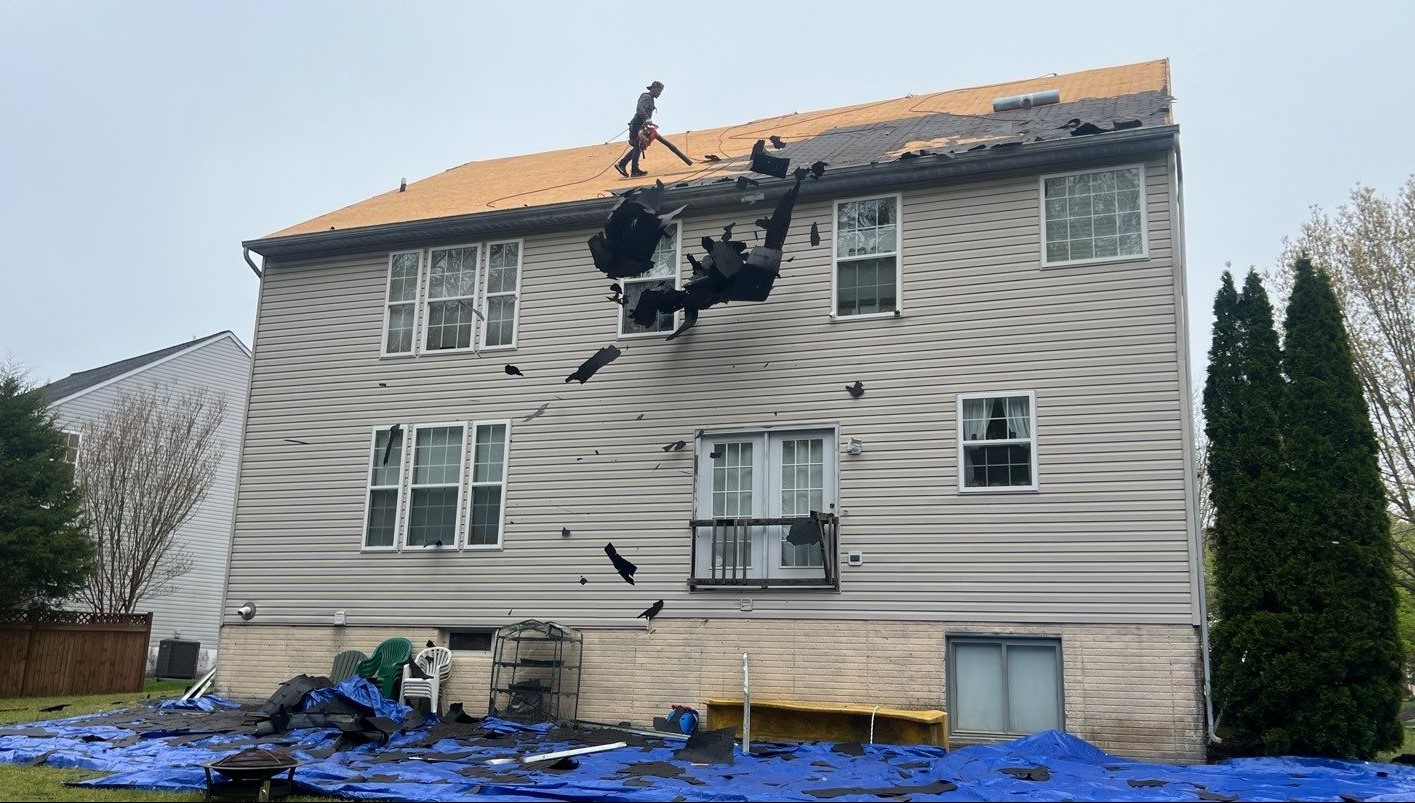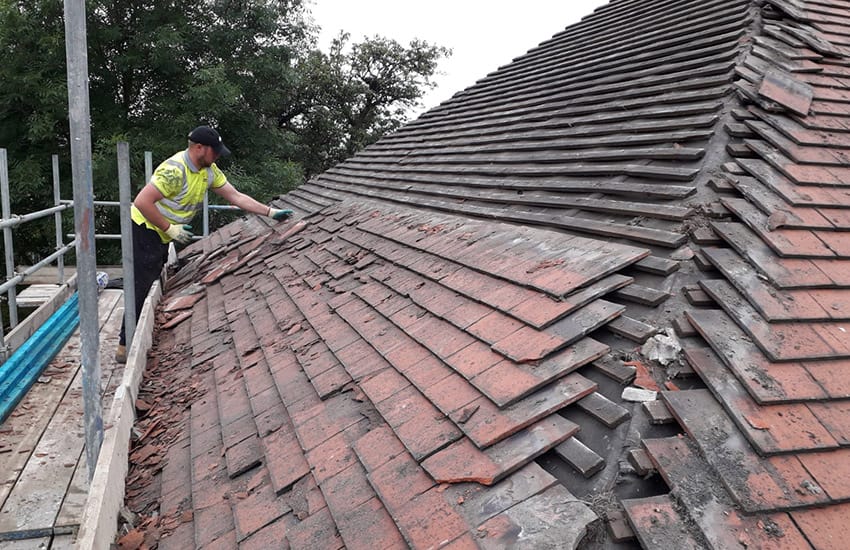Oahu Roofing: Dependable Roofing Solutions for Homes and Businesses
Oahu Roofing: Dependable Roofing Solutions for Homes and Businesses
Blog Article
Understanding the Different Kinds of Roofs: A Comprehensive Guide for Homeowners
With a variety of choices-- ranging from the traditional gable to the contemporary flat-- each type provides special advantages and difficulties that must line up with the homeowner's environmental considerations and specific demands. As we discover the ins and outs of various roof covering types, it becomes obvious that one dimension does not fit all; the appropriate choice might stun you.
Saddleback Roof
Gable roofs, characterized by their triangular shape, are amongst one of the most prominent roofing designs as a result of their simplicity and effectiveness in shedding water and snow. This style features two sloping sides that meet at a ridge, allowing for reliable drainage and lessening the danger of water buildup. The steep pitch typically related to saddleback roofs boosts their ability to handle heavy precipitation, making them suitable for different environments.
In addition to their practical benefits, gable roofing systems provide visual flexibility. They can be adjusted to various architectural styles, from conventional to contemporary homes. The design can additionally fit added attributes such as dormer home windows, which boost natural light and air flow in the attic room area.
Furthermore, saddleback roofs provide enough space for insulation, adding to energy performance. House owners can pick from a variety of roofing materials, consisting of asphalt roof shingles, steel, and floor tiles, additionally improving modification options.
Despite their benefits, saddleback roofs may require extra assistance in locations susceptible to high winds or hefty snowfall. Generally, the saddleback roof continues to be a favored choice because of its blend of performance, toughness, and visual charm.
Flat Roofs
Level roofs are often identified for their minimal layout and useful applications, particularly in industrial and industrial settings (oahu roofing). These roofings feature a horizontal or virtually horizontal surface area, which enables very easy construction and flexible space use. While they might do not have the aesthetic charm of pitched roofing systems, level roofing systems provide many advantages, particularly in urban atmospheres where maximizing room is important
Among the key benefits of flat roofing systems is their accessibility. House owners can use the roofing system space for different purposes, such as rooftop yards, terraces, or solar panel installments. Additionally, flat roof coverings are typically more affordable to maintain and mount contrasted to their sloped counterparts, as they require fewer products and labor.
Common products utilized for flat roof coverings consist of built-up roof (BUR), changed bitumen, and single-ply membranes, each offering unique benefits. Generally, level roofings serve as a practical and versatile option for many home owners and services alike.
Hip Roofing Systems
Hip roof coverings are identified by their sloped sides that converge at the top, forming a ridge. This layout is distinct from gable roofings, as all four sides of a hip roofing slope downwards toward the wall surfaces, providing a much more stable structure. The angle of the slopes can differ, enabling adaptability in architectural aesthetic appeals and capability.
One of the main benefits of hip roofing systems is their capacity to withstand heavy winds and adverse climate problems. The sloped surface areas enable far better water drainage, minimizing the threat of leaks and water damage. Furthermore, hip roofings provide increased attic room space, which can be used for storage and even converted right into habitable locations.
Nevertheless, creating a hip roofing system can be a lot more complicated and costly than easier roof kinds, such as gable roof coverings. The added product and labor entailed in creating the slopes and ensuring appropriate architectural stability can lead to higher costs. Despite these downsides, several property owners prefer hip roofing systems for their toughness, aesthetic appeal, and capacity for energy performance.
Mansard Roofings
Mansard roof coverings, usually identified by their special four-sided layout, function two inclines on each side, with the reduced incline being steeper than the upper. This architectural design, stemming from France in the 17th century, is not only visually attractive however useful, as it optimizes the useful area in the upper floors of a building. The steep reduced slope permits even more clearance, making it a perfect choice for attics or lofts, which can be exchanged living rooms.
Mansard roofing systems are identified by their convenience, fitting various building designs, from typical to modern-day. They can be created with various products, consisting of asphalt shingles, slate, or steel, supplying home owners with a series of alternatives to fit their choices and budget plans. Furthermore, the design allows for the integration of dormer windows, enhancing all-natural light and air flow in the top degrees.
However, it is crucial to think about the possible disadvantages. Mansard roofings might require even more maintenance due to the intricacy of their style, and their steep inclines can be testing for snow and rain drainage. Generally, mansard roofing systems combine sophistication with usefulness, making them a popular choice amongst property continue reading this owners seeking distinctive building features.
Dropped Roofings
As homeowners progressively seek simplicity and functionality in their architectural styles, dropped roof coverings have become a prominent option. Identified by a solitary sloping airplane, a shed roof provides a minimalist visual that complements different home designs, from modern to rustic.
One of the main advantages of a shed roof is its simple building, which typically converts to lower labor and product expenses. This layout enables efficient water drain, reducing the danger of leaks and water damages. Furthermore, the upright incline provides adequate space for skylights, enhancing all-natural light within the interior.
Shed roofing systems likewise use convenience in terms of usage. They can be properly incorporated into enhancements, garages, or outside frameworks like sheds and pavilions. In addition, this roofing system style can accommodate various roof products, including steel, asphalt roof shingles, and even green roofs, lining up with environmentally friendly campaigns.
Nonetheless, it is important to consider local environment problems, as heavy snow tons might demand modifications to the roof's angle or framework. On the whole, lost roofs offer a useful and cosmetically pleasing alternative for home owners aiming to make the most of capability without compromising style.
Verdict


Gable roof coverings, characterized by their triangular form, are amongst the most prominent roof covering styles due to their simplicity and performance in shedding water and snow. oahu roofing. The steep pitch commonly connected with gable roofings enhances their ability to manage hefty precipitation, making them appropriate for numerous environments
While they may lack the aesthetic charm of pitched roof coverings, hop over to here flat roofing systems supply numerous advantages, particularly in metropolitan settings where making best use of space is essential.

Report this page